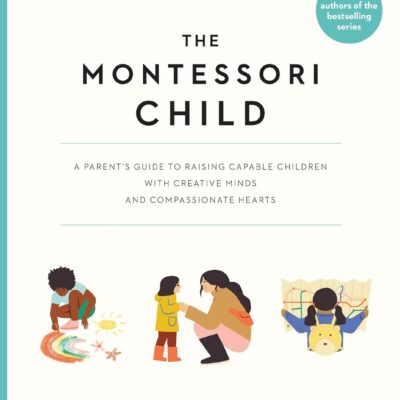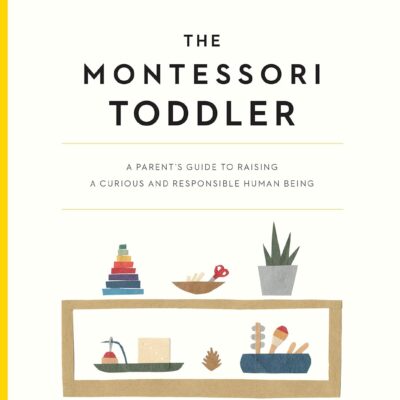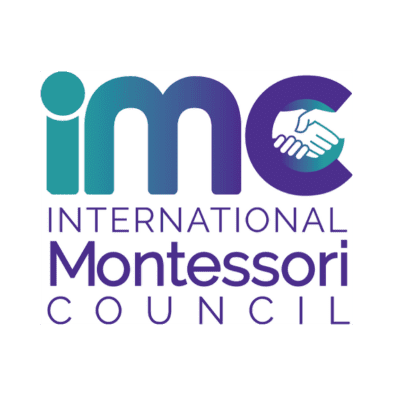This is an excerpt from the Montessori Foundation’s Leadership Institute online course: Finding The Perfect Match: Recruiting and Retaining Your Ideal Enrollment. For more details and to enroll, go to montessori.org/leadership-institute#24999. Active IMC members receive a generous discount on this course. To order Tomorrow’s Child magazine go to: montessori.org and click the the SIGN UP arrow. Active IMC members receive a generous discount on our pamphlet series. To receive your discount call our membership office at 800 632 4121.
First, Make The Phone Ring!
Many Montessori schools worry about enrollment year after year. Instead of being able to look for families who share common values and goals in common with your school, many of us are simply glad to fill spaces. At the same time, many of these same schools spend less than $2,000 a year on marketing! They point out that most of their families find out about the school from word of mouth, which is (after all) free. Many also describe their schools as the best kept secret in town.
A basic rule of thumb in any business is that marketing is essential. Many businesses spend 5%, 10% or more on advertising. They use website, Search Engine Optimization (SEO), and social media. They also distribute brochures, send out direct mail flyers, run ad after ad in newspapers and magazines, buy radio and cable TV spots, and continue to look for new ways to distinguish their product or company from everyone else in town.
Montessori schools see money spent on recruitment as either being unnecessary or not available. After all, those dollars could be buying a new pink tower or something else for the children!
Did you ever hear the song that told the story about a fellow lost in the desert who stumbles across an old ghost town, where he finds a rusted old hand-pump? Hanging from the pump handle is a bottle of water with a note attached. The note says, “Friend I know that you’re dying of thirst, and you’re tempted to drink the water in this bottle, but don’t.
Down below there is all the cold clear water you could ever want, but to get it you have to have faith. Pour that water into the pump to prime it and pump like mad, and you’ll discover all that you need. Drink it from the bottle, and you will surely die of thirst.” Money invested in marketing is priming the pump. For most schools it is the difference between barely hanging on and success. There are more than enough students to go around. Our challenge is to get their parents’ attention.
There are also many Montessori schools that are full, with a waiting list, but which have a high turnover of students. Careful marketing can help get you into a position where you are able to select families that will stay with your school and help you to develop into a World Class Montessori school. Good marketing helps you move from a position of recruitment based on numbers to recruitment guided by the principle of Finding the Perfect Match. Both approaches to recruitment, however, rely on getting parents to know you exist, and then making that call.
Touchpoints
Advertising is essentially about getting your name out into the community—letting people know you exist and getting them interested enough to want to find out more. In advertising the term “touchpoint” refers to any contact a business makes with a customer. An effective marketing plan creates multiple high quality touch points with a targeted base of potential customers. Each touchpoint should reinforce your brand. For marketing to be effective, customers need to be exposed to your brand about seven times (Levings, 2011).
Whenever you’re talking to parents, whenever you’re communicating with them through ads, brochures, anything at all on any media, you have to remember that the way to get their attention is to help them to see what you can do for them, that’s the secret, they don’t want to know that you’re open from nine until three.
They don’t care that you were established in 1967. They don’t even care that you have a hundred acres. That’s not in itself going to get them to call you up on the phone. The only reason for an ad is to get people to pick up the phone.
An ad can get them to pick up the phone. When you design your ads you need to remember that you’re not selling Montessori, you’re not selling a commodity, and your school is not like any other school. Remember that when you talk about tuition, most of us set our tuition on the basis of what other schools charge. When you design your ads, think about it from the customer’s point of view. How will your school make their life easier, how will you make their life better.
What is it that you can do for them that will actually draw their attention, get them to pick up that phone and call you? Don’t try to tell your whole life story in an ad. That’s not what an ad is for. All you need is a picture, a headline, the name of the business and the phone number. Anything you put in beyond that is gravy. And the biggest danger is trying to say too much. What you’re actually communicating is one idea—that’s it. One idea.
In general, with ads you only get two seconds; when they’re looking at a page, they’re only going to look at your ad if they’re really anxious to buy that product. If your ad is visually compelling, you grab their attention. Generally speaking, you’ll grab their attention more if you focus on explaining how you can make their life easier.
That’s what they want to know: “why should I give you money, why should I come in.”
Where Should You Advertise?
Repetition
The first rule to remember is that running an ad just once or twice a year is generally a waste of money.
The exception to this rule comes when your ad is:
- really large (such as a full page ad)
- really compelling—the kind that grabs most people’s attention and gets them hooked right away
- or when it is placed in a publication that is read by a huge audience.
Most ads get a response rate of well under one percent (i.e., of all the people who see the ad, this would be the percentage who bother to call).
Shelf Life
Most print publications have a short shelf life. Some with a short shelf life are typically reasonably priced; others are not. Some have a large readership, but one that is very diverse, the majority of whom may not be part of your target audience.
Digital Footprint
Having a web presence is the most important first step in marketing. As soon as you begin planning your school, have a website set up. The first step is to secure a url. Think carefully when selecting your url—it should be easy to remember but obviously tie in to your school’s name. Urls should not be too long. Test acronyms to see what else comes up in a search.
Your website is so important that it is worth getting the job done professionally. There are many companies that use “semi-custom” design templates with a variety of functions that will assist you in promoting your school. When choosing a company to design and maintain your website, choose one that allows you to make certain routine changes yourself. Most software now allows for “front-end” editing that is no more complex than sending an email. This means that you can constantly update your website without incurring
ongoing cost.
It is important to pay attention to the following:
Ensure that your website is search-engine optimized (SEO). SEO websites are tweaked to respond to certain key words. You want a parent in your target area to find your school website at the top of the search result, not on page 5,893 of a Google search! Your website designer should be able to create the necessary settings to allow this.
Ensure that your contact information is easy to find. Ideally a telephone number and email link should appear on every page.
Have a box that allows people to sign up for news about your school. This will help you begin a data-base for future mailing.
Ultimately, you should have a password-protected area for parents that you use for posting material that will not be available to the general public.
In the run-up to opening your school have a “countdown” feature. This can later be used as a countdown to renewal of registration date.
Link to your Twitter account for updates about open days and other school events.
Create a Facebook page linked to your webpage.
Get your school webpage linked to as many school search facilities and directories as possible. See, for example, schools.guidedstudies.com/search/.
When setting up your webpage, ensure that you have permission to use content. Do not simply cut and paste from other sites. Ensure that your content truly represents the unique nature of your school.
Explore Facebook and Google advertising. This is not as expensive as you may think and can be very carefully targeted for specific geographical areas and age groups.
School Brochures and Supplementary Materials
There is a difference between a school brochure and a mini brochure, which is a direct mail piece.
Mini brochures are designed to get parents attention and prompt them to call for more information. They are inexpensive to produce, have few details, and give a broad impression of the school’s primary selling points in a few words and several excellent photos. Often they are designed to be used in mass mailing.
The point of the mini brochure is to distribute it as widely as possible.
A proper school brochure (which is sometimes called a viewbook or a prospectus) is designed to be given to parents after they have called and expressed real interest; sometimes before they have attended an open-house, sometimes they are given out at the school visit. School brochures are intended to provide more in-depth information. They also serve to remind the family about what the school was like once they have left the grounds and are considering among several school brochures set out on the dining room table. These are expensive to produce (often more than $7 each in the US) and are not given away casually, as one might with mini-brochures.
The full brochure is intended to ‘reel in’ those families that your school would like to recruit.
Most schools include various pamphlets and supplementary materials with their brochures.
This commonly includes:
- A tuition and fees pamphlet, which often includes descriptions of basic optional school programs and may
describe some simple school policies. - A curriculum overview document describing the school’s course of study in greater detail.
- A copy of Tomorrow’s Child magazine, stamped on the back where the address would normally go complements of the ____ Montessori School, with all contact details.
- A copy of any special pamphlets that supplements the brochure, such as Montessori Basics or A Child’s Day. The Montessori Foundation produces a range of pamphlets on aspects of Montessori education.
- A copy of the school’s newsletter or, if it publishes one, its magazine.
Direct Mail Marketing
Direct mailing is a cost-effective and efficient way to target a specific geographical area. The most cost-effective method of direct mail marketing is the postcard. These do not have to go in an envelope, so the visual image is seen immediately. Identify areas with growing populations of families with young children. Be very specific about your message.
Press Releases
The basic tool for generating publicity is the news release. With it you can get free publicity from newspapers, magazines, radio, and television. Most of the news in newspapers and magazines comes from news releases sent out by companies, government agencies, associations, and various individuals and groups. Since a properly prepared news release is the cornerstone of any publicity campaign, follow the instructions to ensure that you create a good one. While some room for creativity exists, there is a common, easy-to-follow format for successful news releases. It has several key elements:
- the originator (you)
- the release date
- the contact
- a headline, and
- the double-spaced copy itself.
If you send out the news release on your company stationery, that will take care of the originator. All you have to do is type NEWS or NEWS RELEASE in capital letters at the top of the letterhead. Having special news release stationery may have more visual impact, but it isn’t necessary. The release date is the date you want the story released. In many cases, it can say FOR IMMEDIATE RELEASE.
This is probably best, unless there is some overriding reason why the story can’t be released before a certain date. Also necessary is the name of a person to contact for further information. Along with the name, include the telephone number and area code where that person can be reached. In cases where the material is extremely time-sensitive, you may want to include an evening phone number as well as the daytime number.
The headline should appear in capital letters, six spaces below the contact line. It should be as clever and catchy as possible so it captures the attention and arouses the interest of the editor or producer. Newspaper headlines can be used as models of how to write news release headlines.
Try for a headline that compels the reader to read the entire release. Eight spaces below the headline, you should begin the body of the release. It should be double-spaced and written like a newspaper article, with the most important information in the first paragraph, the supporting information next, and the least important information last. A news release can be any length, but a one-page release is probably best. If you do use more than one page, place the word ‘MORE’ at the bottom center of the first page.
You can use emails and news releases to announce the start of your company, new products and services, speaking engagements, and appearances on radio or television shows, or any other event connected with your company that has potential news value. Whom you address your news releases to is extremely important. Newspapers and magazines have specialized editors, while each radio and television talk show has a specific producer.
Your best chance for getting the publicity you desire is by directing your release to the appropriate editor or producer. Because your release may be reprinted verbatim in some newspapers or organizational newsletters, spend ample time to compose clever, readable releases. In some cases, your release may even be used as the basis for a feature story. It’s a good idea for your news releases to end with a “For more information” paragraph.
Use this to give your school’s name, address, and phone number and to offer a free brochure or some other kind of promotional material. Doing this encourages people to contact your office, giving you new prospects and an opportunity to gauge the relative impact of that particular coverage. If you are particularly interested in developing a high media profile, you may also want to add a line at the bottom of your release saying ‘Media interviews welcome.’ Professionals and others in personal service businesses can benefit most by being recognized as experts in their field by the media.
Be sure to key each news release so that you’ll be able to know where your inquiries are coming from. A simple keying system involves placing a department code somewhere in your address on the release, for example: ‘580 Main Street, Dept. OT.’ This code could be for a release sent to The Oakland Tribune. You could use numbers as codes instead of letters, or a combination of both.
Your Car as a Marketing Tool
In recent years, a new development is the use of a see-through film that is placed in the rear windows of commercial vehicles, such as taxicabs, buses, and delivery vans. They can also be placed on the back windscreen of your car. A tasteful and
beautifully designed ad might be well worth considering.
Remember that such ads must be very simple, with your school website highly visible. Drivers of other cars will only have a few seconds to see (and remember) these details. There is also a technique called “car wrapping” which involves a vinyl wrap which, is removable, and covers most of the body of the car. Removable magnetic adverts can be placed on car doors. For this method of marketing to be effective you should choose your target audience.
- For example, try to plan your commute to pass places where families with children might congregate.
- Park your car outside venues where parents of small children might be sure to see it.
Organizing a Word-of-Mouth Campaign for Your School
A word-of-mouth campaign is an organized set of coordinated activities designed to reach a particular objective. Schools often sense that most new families learn about them from friends and co-workers. And when you look over the list of things schools can do, you may be tempted to say that you are already doing many of them.
But a word-of-mouth campaign is different:
It is planned and coordinated. While every school does some of the right things at times, they rarely do them consistently or with enough intensity to create a measurable affect on the calls coming into your office.
Creating a word-of-mouth explosion cannot be done haphazardly. It demands a major commitment. First, become clear about how to best describe what makes your school special and different: your programs, facilities, people, and the benefits that it gives to its children and families. Find a way to describe your school in a way that people can easily understand, find compelling and persuasive, and can explain to others in simple words. Montessori schools tend to find this very difficult. Stimulate and collect testimonials about how wonderful your school is from present parents, parents of your graduates, and any outside “experts” that you can find (doctors, the city mayor, etc.). Teach your staff how to collect testimonials, and work them into brochures, ads, and newsletters.
“Tell-a-Friend” programs: Motivate your present families to bring in new customers through incentive programs.
Customer referral programs:
Provide them with support materials, brochures, copies of the school newsletter, school open houses and other special events, and, most importantly, a strong school website.
Seek out and find ways to encourage highly visible community leaders to place their children in your school:
Montessori schools tend to be reluctant to openly approach them, and almost relish their school’s isolation from socially prominent people in their community. Sadly, people who are well known and highly regarded can open many doors for your school. Without selling out your values, consider actively seeking these people out.
Canned word-of-mouth messages:
Leading schools often incorporate direct testimonials about the positive affect the school has had on their children. They weave these messages into brochures, print ads, radio, cable TV, and on their websites.
Community wide parenting education programs:
By sponsoring a year-round series of classes on raising children, schools can bring prospective families, present families, and their staff together in a very positive forum, allowing people to get to know your school and spread a positive message out into the community.
Online discussion groups:
More schools are establishing discussion groups through free services such as Yahoo groups.
By encouraging free communication, the school can monitor what folks have to say and can respond to criticism
and attempt to deflect inaccurate and unfair information.
Parent forums:
Parent forums are typically monthly meetings in which parents gather to explore a topic of mutual interest about children and their schooling.
Advisory councils:
By holding open monthly community meetings in which parents can give the school’s administration and board honest feedback, schools can create a positive vehicle to not only respond to inaccurate information or unfair criticism, but to positively solicit responsible parent input. Use email broadcasting to regularly communicate with your families and get them to circulate information to the people that they know both within and outside of the school.
Give them something positive to talk about. If you want parents to talk about your school, give them something meaningful to talk about everyday! Look for and share stories about things going on in your school that provide evidence of how well your children are doing and how terrific your school really is. Send in stories and photos about your school to Tomorrow’s Child. Don’t forget your local newspapers, too! Parents love to see their children’s photos (their photos too!) in print.
Get your school accredited! Increasingly, parents want to know which Montessori schools are accredited. The concept has caught on, at least in larger communities. Just belonging to an organization is no longer enough. Remember, accreditation is the one external and objective vote of confidence that most parents understand.
Many Montessori organizations offer accreditation to childcare centers and schools. The International Montessori Council (IMC), the American Montessori Society (AMS), the Association Montessori International (AMI), and the independent Montessori School Accreditation Council (set up by the National Center for Montessori Education) are offering accreditation. Several national Montessori organizations, such as the Canadian Council of Montessori Administrators and the Montessori Association of New Zealand, offer accreditation as well.
Sources:
Levings, Kristy. 25 ways to 7 touchpoints How to sow marketing seeds that will help build awareness and boost enrollment. Public School Montessorian, 70. Winter 2011.
Seldin, Tim. Building a world-class Montessori School. Montessori Foundation. 2002.
Montessori Leadership / February 2017 / p 19





